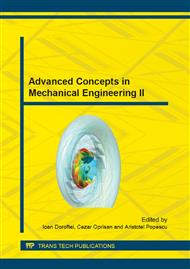p.365
p.371
p.377
p.383
p.389
p.395
p.401
p.405
p.411
Finite Difference Approaches for One-Dimension Solid-Liquid Phase Change in Plane and Cylindrical Geometries
Abstract:
Two finite difference methods are presented and discussed, that are applied to the phase change process (freezing) occurring in plane and cylindrical geometries. The first one involves the use of a variable space step grid for each of the time steps of the procedure. An original technique based on Lagrange polynomials is used to determine the actual nodal temperature corresponding to the old temperature field. The second technique uses a fixed grid attached to the phase change material, and the finite difference equations of the nodes neighboring the solid-liquid interface are derived in a special form that involves fractions of the space step. Both techniques are applied to a plane and a cylindrical metallic wall respectively that represents the boundary of the phase change material domain. The numerical results obtained by running the computer codes that we have written for the two techniques show an excellent agreement, the values of the interface rate and of the solid phase fraction at every time step being practically the same.
Info:
Periodical:
Pages:
389-394
Citation:
Online since:
October 2014
Authors:
Price:
Сopyright:
© 2014 Trans Tech Publications Ltd. All Rights Reserved
Share:
Citation:


